The 2020 Yamaha WR250F enduro weapon is based on the successful YZ250F. We recently spent some social distancing time in the bush on one... Review: Heath Griffin Pics: iKapture
Most of my recent dirt bike and supermoto riding has been limited to either 250/300cc two-strokes, or 450cc four-strokes, so when asked if I was interested in testing the all new 2020 WR250F I was excited to see how far the 250 four-strokes had come…
In fact the last time I had thrown a leg over a 250 four banger was when a mate swapped me a ride on his TTR250 way back in 1997. At the time the TTR was the latest and greatest 250 ‘diesel’ on the market, but it felt miserably heavy and painfully sluggish even compared to my eight-year-old KDX200 at the time, and I couldn’t wait to get off the thing, swearing that I’d never ride another one.
Move forward a couple of decades, and I was well aware that things had moved on significantly, and the current crop of four-stroke MX based enduro racers bear no resemblance to the fat and lethargic trail bikes of the 1990s, however my eyes were well and truly opened by just how good it is.
THE RIDE
My first ride was up through the Wattagan State Forest on the NSW Central Coast, a popular destination for local trail riders and 4WD enthusiasts, and the perfect place to test this type of machine in the type of environment it will most likely be ridden. For the Australian market, the new WR250F is supplied fully ADR compliant and in road registerable condition. A free competition kit is supplied and can be easily fitted for closed course use. Details are listed with the Tech Breakout below.
Within five-minutes of hitting the trails I was having the most fun I’ve had on any motorcycle in a long time, and wondering if this might be the machine to steer me away from my previously held belief that any four-stroke smaller than 450cc would be way too boring for me to ever own.
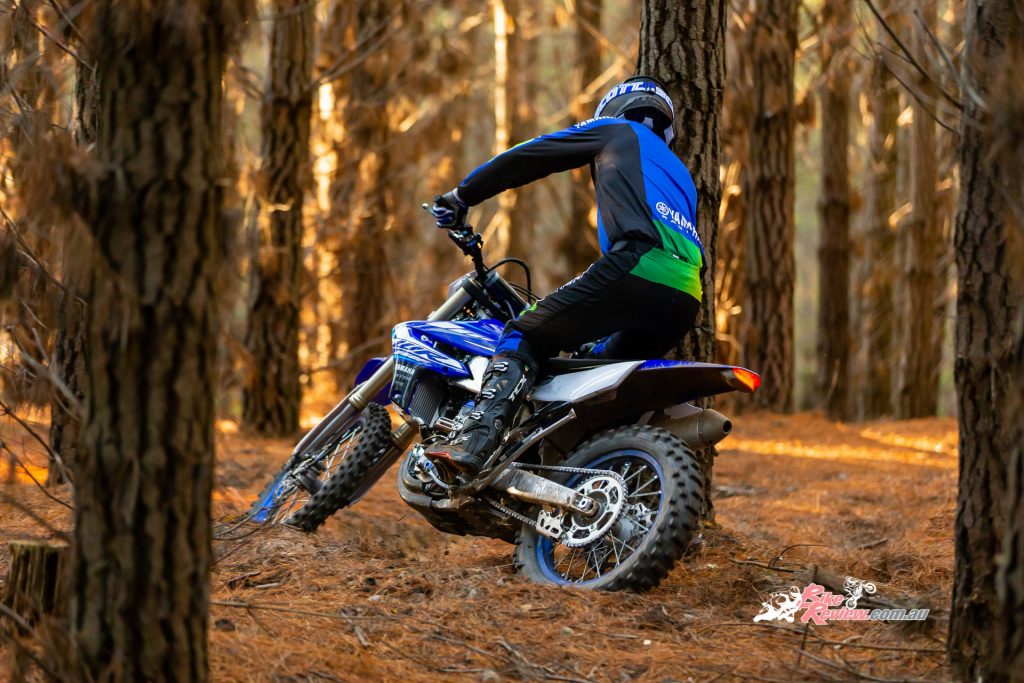
Where the WR250F has a significant advantage over a 450 is through tight single track, where it feels a lot lighter.
Based on last years multiple title winning YZ250 MX bike, Yamaha’s unique reverse-cylinder layout 250cc engine is amazingly versatile and surprisingly fast. The way it develops power is significantly easier to manage than a 450, whilst still being plenty fast enough to keep up with well ridden larger machines anywhere except on fourth gear plus open fire trails.
Where the WR250F has a significant advantage is through tight single track, where it feels a lot lighter in comparison to a 450 than the small difference on the scales would suggest. It’s also massively easier on tricky hill climbs, where the engine produces just the right combination of torque and traction to maintain drive and momentum, where a 450 would be struggling to find a balance between breaking traction and hoisting the front wheel, neither of which are helpful in that situation.

Heath missed the extra grunt of a 450 when it came to big open trails, where the 250 was not as fun.
While the manageability of the powerband assists in providing a less intimidating experience, there is still plenty of grunt on tap to be able to loft the front wheel over logs and other obstacles on the throttle in third gear, and I rarely found myself wanting for more power during a wide range of riding conditions.
The only places I missed the extra grunt of a 450 was in the higher gears on more open trails, where power sliding around high speed corners is definitely not as satisfying. Also I couldn’t seem to get the WR250F to launch off unexpected table drains as easily as I would on a bigger bike.
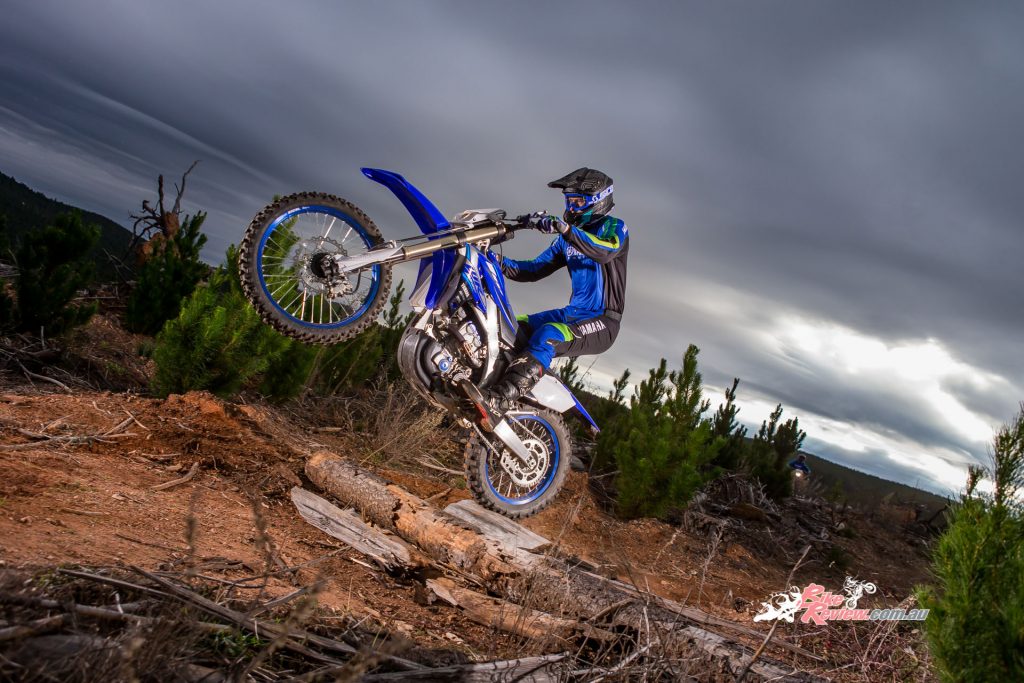
There is still plenty of grunt on tap to be able to loft the front wheel over logs and other obstacles easily.
It feels as though the relatively smaller hit of torque when you crack the throttle means you can’t instantly preload the shock on the face of a jump, so while you can still launch it if you have a bit of a run up, it’s definitely harder to get as much air when you come out of a blind corner and try to launch it off a small jump for a bit of fun.
Overall the latest WR250F engine is amazingly capable, fueling is pretty much spot on, the gearbox and clutch are light and positive, and I really couldn’t find anything to fault in these areas. I have heard whispers of other testers having problems with the engine flaming out at low speed, or stalling at idle, but I didn’t experience any of these issues during my three weeks with the WR.
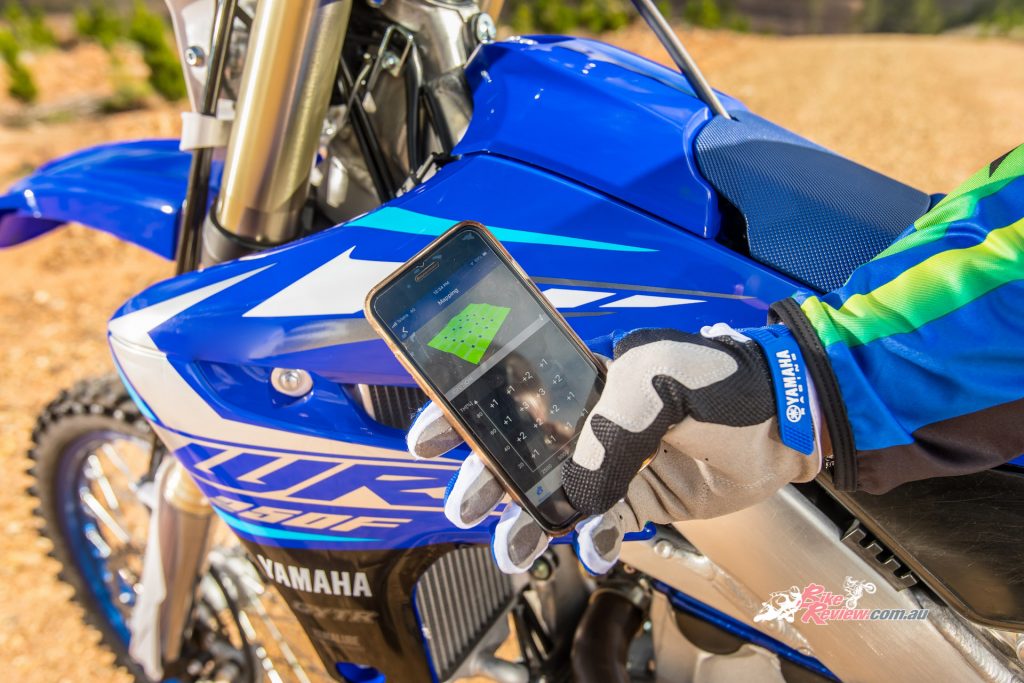
Heath found the standard map to be so good that he didn’t need to change it via the mobile app.
A quick note on Yamaha’s new on board wifi smartphone tuning app. This allows owners to connect to their bikes engine mapping control unit, and make fueling and ignition adjustments on their mobile phones, allowing changes to engine character depending on conditions.
I had a brief play around with this during my time with the bike, and if I owned one I’d definitely get a lot more involved with testing different settings in different conditions, however I found the standard Yamaha map to be so good that I chose to focus more of my time just riding it as supplied and grinning from ear to ear the whole time.
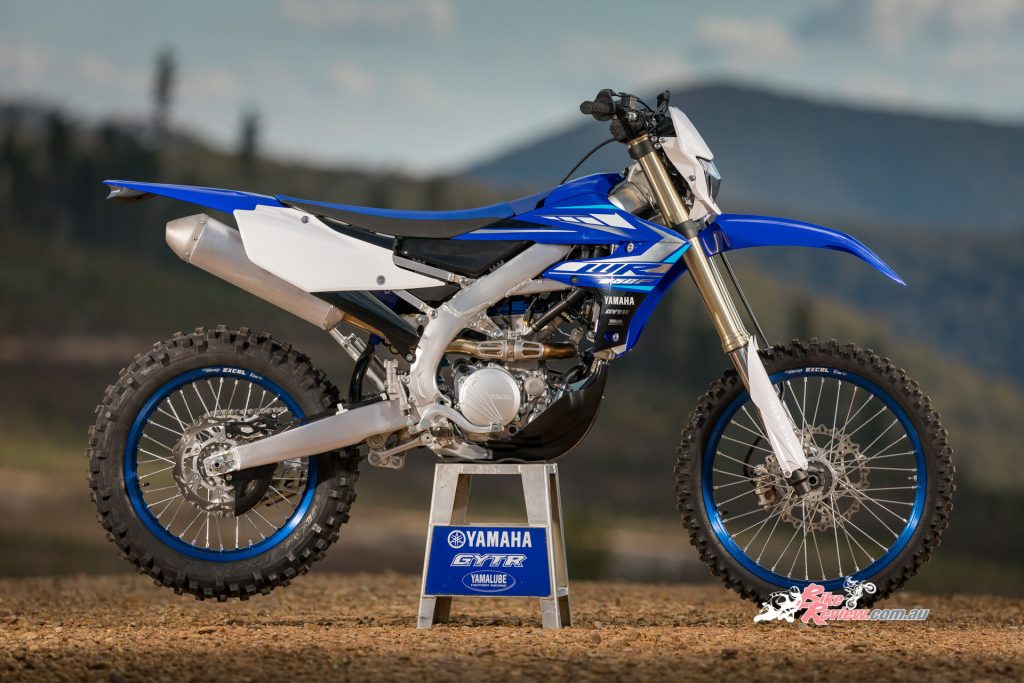
2020 WR250F is based on the title winning MX 250, the YZ250F, and is a high-tech competition bike.
If the engine on the WR250F is a pleasant surprise, then the chassis and suspension is a revelation. From the first ride I knew this was pretty special for a stock machine, in fact pushing at my normal level of confidence I could have described it as faultless. Smooth and comfortable while giving loads of traction and feedback at both ends (keeping in mind our test bike was fitted with proper dirt oriented rubber), I couldn’t upset Yamaha’s 2020 enduro bike in any way riding at my usual weekender pace.
The biggest thing that stood out for me in my first couple of hours in the saddle was the lack of deflection from the front over rough ground and obstacles. The Wattagans had experienced some significant storms in the weeks leading up to my time with the WR, and there were plenty of small to medium sized branches littering the trails.
Normally this would keep me very focused on trying to adjust my line to hit branches square on and avoid the front skidding across, or deflecting off, slippery angled debris, however the WR250F handled these almost with contempt.
In fact the first time I hit an unexpected branch laying at about a 45 degree angle to the track my body tensed up waiting for the inevitable front wheel slide followed by my right collarbone plowing into the dirt, however nothing happened. The WR tracked so straight and true that I almost thought I’d missed the log entirely. This was a real indicator of just how confidence inspiring the chassis and suspension set-up is on this bike.
As I spent more time on the WR I was actually starting to get a bit worried I wasn’t going to be able to provide any meaningful feedback on the handling performance, as it was just so damn good that I couldn’t fault it riding in my normal comfort zone.
The beautiful thing about this bike though is that it gives you so much confidence to extend yourself and push harder than you would have thought possible. As I did this I began to find some limits and areas for improvement, although I had to push pretty hard and go looking to find them.
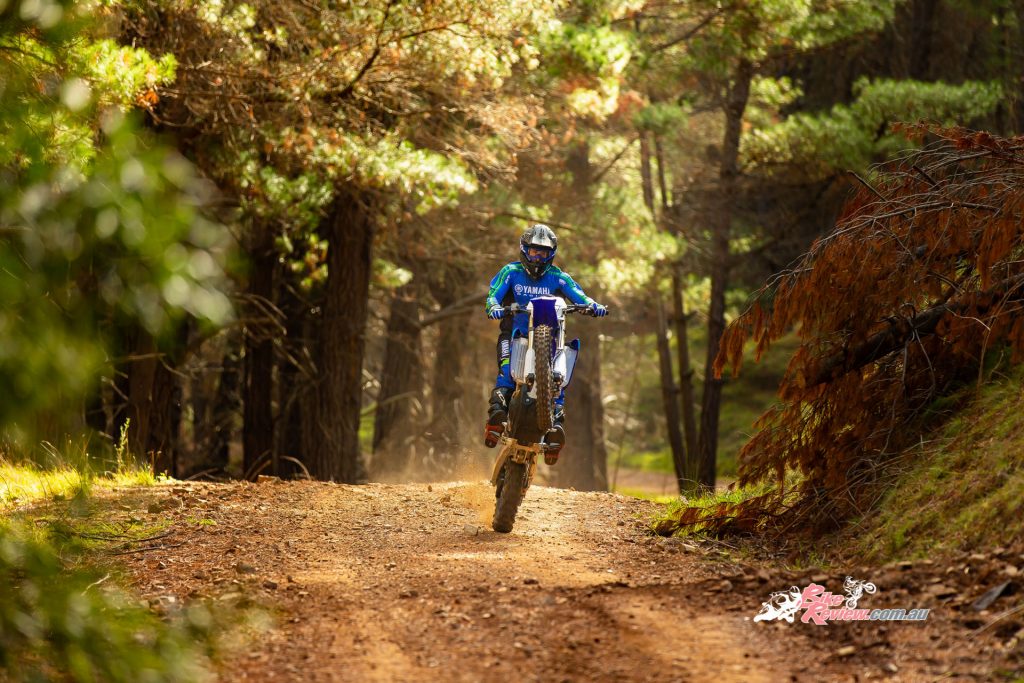
“Once I upped the pace I started to find the suspension to be a little on the soft side overall for my 85kgs…”
Once I upped the pace I started to find the suspension to be a little on the soft side overall for my 85kgs, so when hitting square edged obstacles or big potholes it would blow through the stroke and bottom occasionally.
This could possibly be cured by adding a bit of compression on the fork, however by the time I was riding hard enough to find any issues it was time to give the bike back to Yamaha. In any case it’s a small complaint that I only found when pushing beyond my normal comfort zone, so overall I think Yamaha have done an outstanding job with the chassis and suspension set-up.
I think the biggest indicator here is that I can’t think of a lot to criticise ergonomics wise, with everything being in the right place, and easy to operate. The WR is definitely quite a tall bike for a 250cc machine. I’m 193cm and couldn’t get my feet flat on the ground, so there may be some ride height adjustment required for shorter riders who just want to trail ride comfortably, and who aren’t looking to set the local enduro loop lap record.
Brakes and clutch are effective and light to operate, and while the front brake doesn’t quite have the outright stopping power of the Brembo set-ups on the latest Euro bikes, I never found it wanting, and the level of feel and control over modulation is excellent.
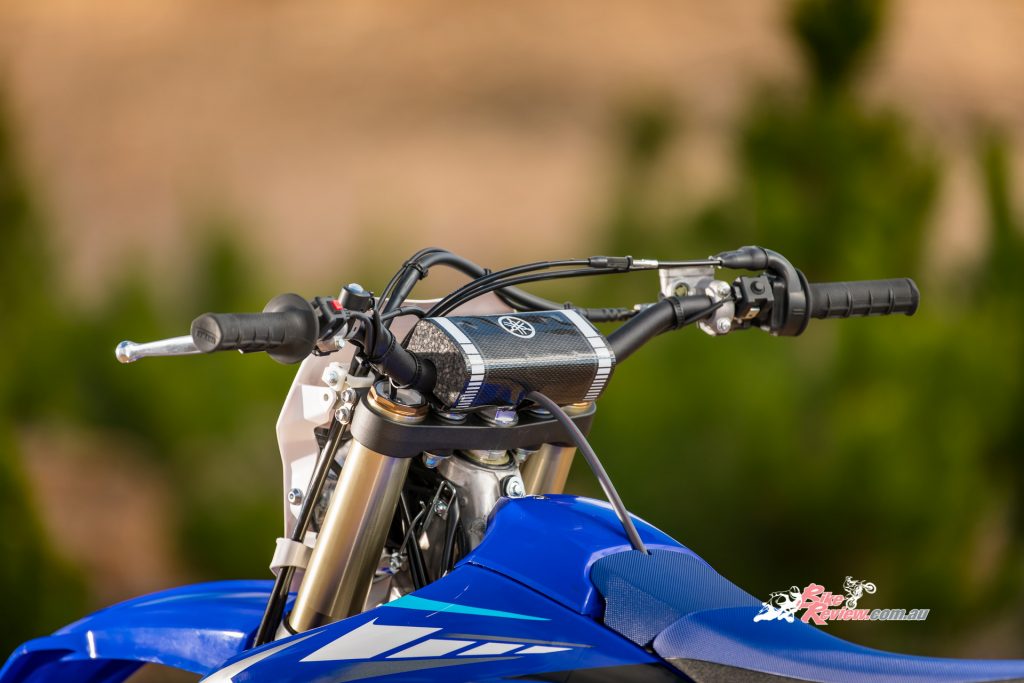
Heath found the WR250F hard to criticise ergonomics wise.
My biggest complaint with the whole bike though is actually the combination of that alloy frame, and completely frictionless side plastics. When in the standing position it was very difficult to achieve any sort of grip on the bike with my legs, and definitely the first thing I would do if I owned this bike would be to add some grip tape in these areas, as I believe that would transform the ride for the positive.
CONCLUSION
I found my time on the WR250F to be massively enjoyable. It is a highly capable and confidence inspiring machine, with all aspects of its performance impressing me greatly. It also gave me the most fun I’ve had on a dirt bike in years and improved my riding at the same time.
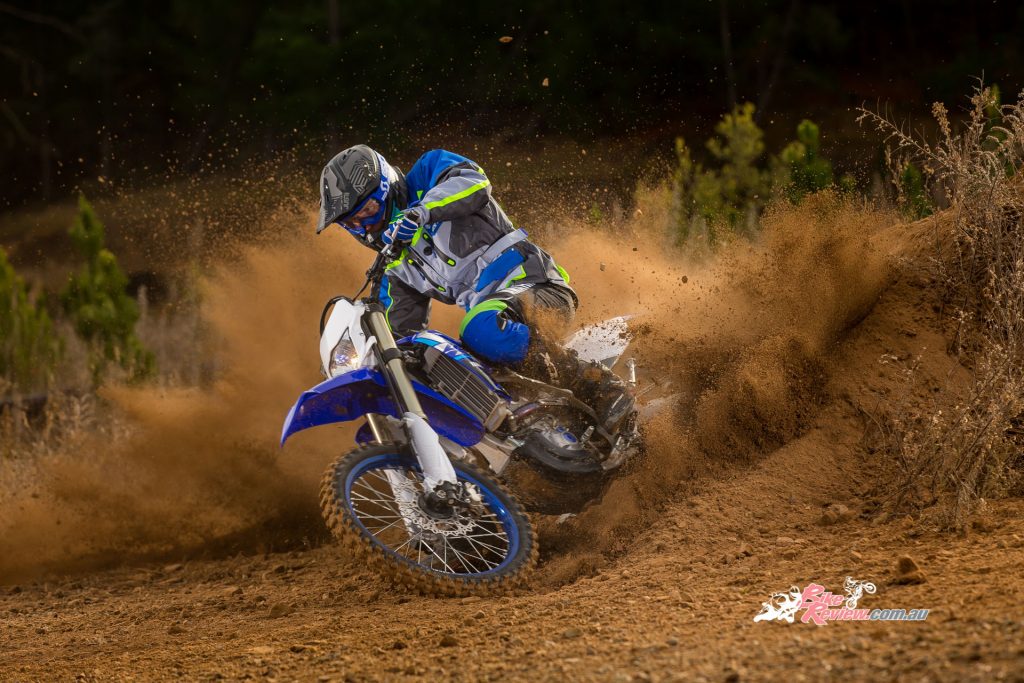
Heath had a change of heart about 250cc four-strokes after his WR250F experience…
Before I tested the new WR I’d have said there’s no chance I’d chose a 250F over a 450F when buying a new enduro or MX bike, but now I have a real question there. I’d have to spend a bit of time on both back to back to make a clear decision, but the WR250F is definitely in the game as one of my favourite ever enduro bikes.
The new 2020 Yamaha WR250F is available for $14,099R/A and is ADR compliant, meaning that it is road registrable. If you want a seriously competitive enduro machine, jump into your local Yamaha dealer and swing a leg over one and tell us what you think!
2020 Yamaha WR250F Tech Talk
The new WR250F engine is based closely on the fuel-injected YZ250F design (Check our review here), and features a rearward-inclined cylinder and reverse cylinder-head. Its airbox is situated in front of the rider and the fuel tank located at the centre of the bike – a unique configuration that contributes to the bike’s mass centralisation, which plays a pivotal role in achieving light and agile handling.
In addition, the WR250F’s reverse cylinder-head allows the use of a straight air inlet for higher levels of intake efficiency, and by locating the fuel tank centrally, this innovative design permits the use of a long and flat seat that allows the rider to shift their body weight quickly and easily.

The new WR250F engine is based closely on the fuel-injected YZ250F design.
The 2020 WR250F features a new high compression forged aluminium piston, revised valve angle and exhaust cam timing with revised balance factor – all based on the current YZ250F, but with enduro specific settings to provide a high level of performance. That performance is further boosted by the fitment of a dual electrode spark plug and revised exhaust muffler for 2020.
Compared to the former WR250F engine, the 2020 design is more powerful at higher rpm, and also delivers stronger power right through the rev range, making it a serious contender for top honours.
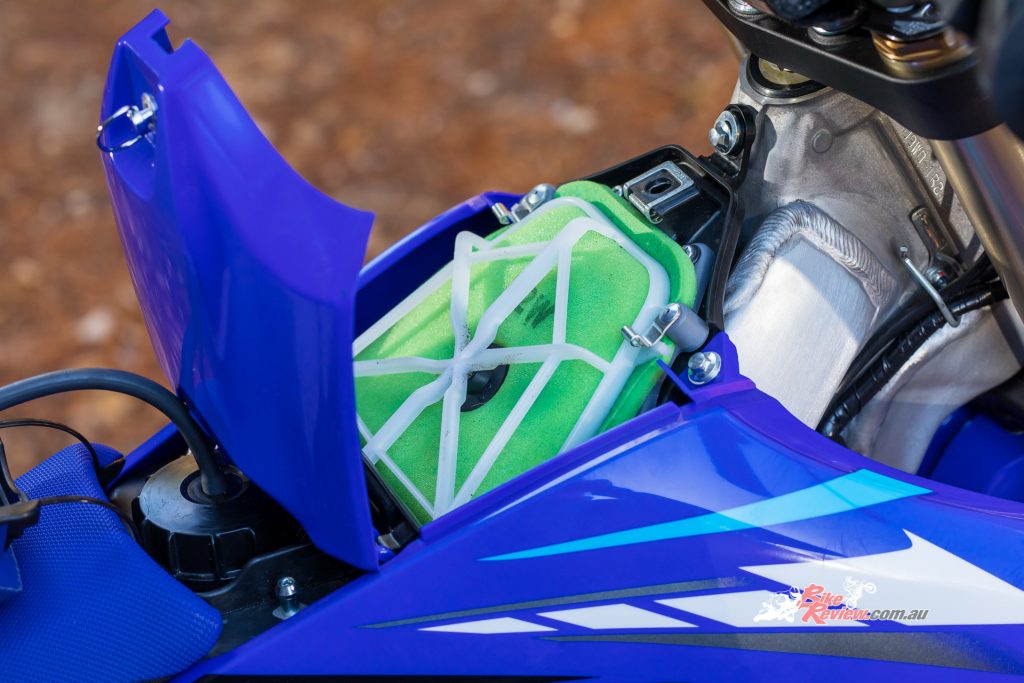
The filter element features reduced airflow resistance and intake noise combined with increased reliability.
The filter element features reduced airflow resistance and intake noise combined with increased reliability. The new filter and the length of the intake funnel contribute to an excellent feeling of traction and linear characteristics during acceleration and deceleration. Plus, dust filtering capability is increased by adding rubber seals to the centre positioning pin.
The 2020 WR250F is equipped with a six-speed transmission that is designed to handle a wide variety of terrain, from technical rock climbs to full throttle blasting along forest tracks. A new lighter and tougher clutch is now mated to the ‘box to match the extreme demands of enduro riding. Featuring new heat resistant friction plates, this durable clutch has a super light lever pull and is built to perform consistently and effectively for long periods in the toughest terrain.
A lightweight starter motor contributes to mass centralisation. Also, a garter spring is adopted for the spring of the one-way starter clutch in order to reduce horsepower loss – a 60 per cent reduction in load compared to the outgoing model.
On board WiFi means that you can tune the new WR250F to different track conditions using your smartphone. A downloadable Power Tuner app allows you to make fuelling and ignition timing changes instantly and upload/share them for the ultimate in trackside tuning. The free Yamaha Power app also allows owners to record race log information and monitor a range of data such as maintenance and system diagnosis, engine run time and more.
The on board WiFi is available thanks to a Command Control Unit (CCU) that contacts the ECU and forms part of the free competition kit offered to Australian customers.
A bar-mounted dual engine map switch has been adopted and positioned next to the left lever to enable changes in the engine power delivery characteristics mid-race. This switch allows the rider to select one of two engine maps on the fly at the press of a button to cater for changes in the riding environment.
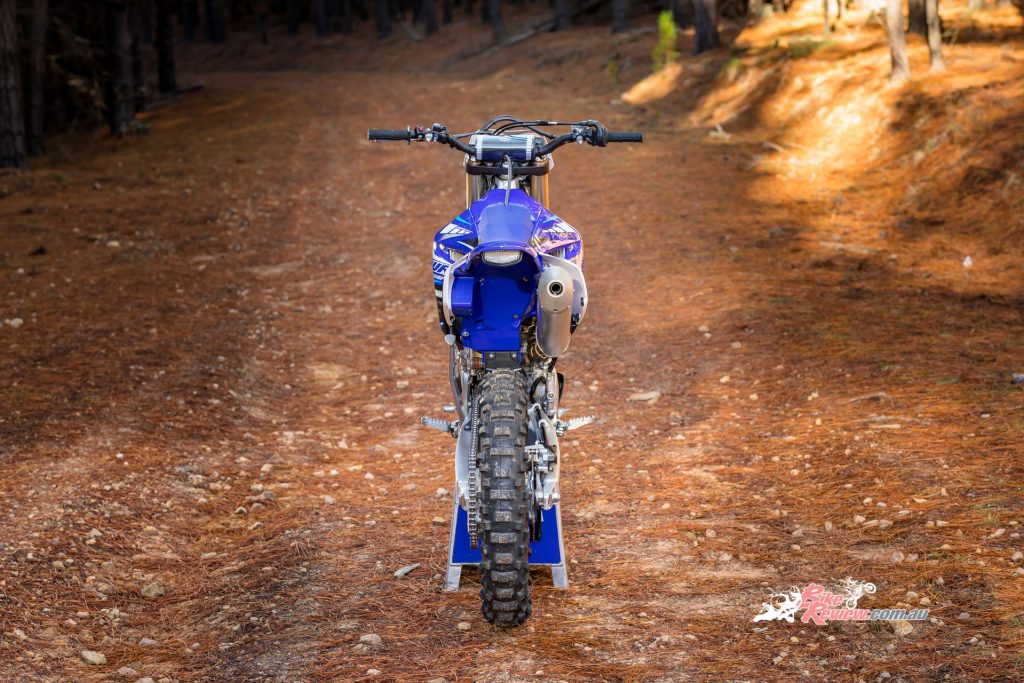
The 2020 WR250F now runs the same bilateral beam frame as the sharp handling current model YZ250F.
This means that when the going gets loose, steep or muddy – high traction can be accessed at the press of a button.
WR250F now runs the same bilateral beam frame as the sharp handling current model YZ250F. To achieve a rigidity balance with the amount of flex needed for enduro riding, the engine mount brackets have been altered. The upper-side mounts are the same as on the YZ250F, while two-plate type mounts are used for the front-side mounts. The result contributes to the machine’s excellent feeling of contact with the ground and offers feedback about the riding surface while providing a light feel to the handling.
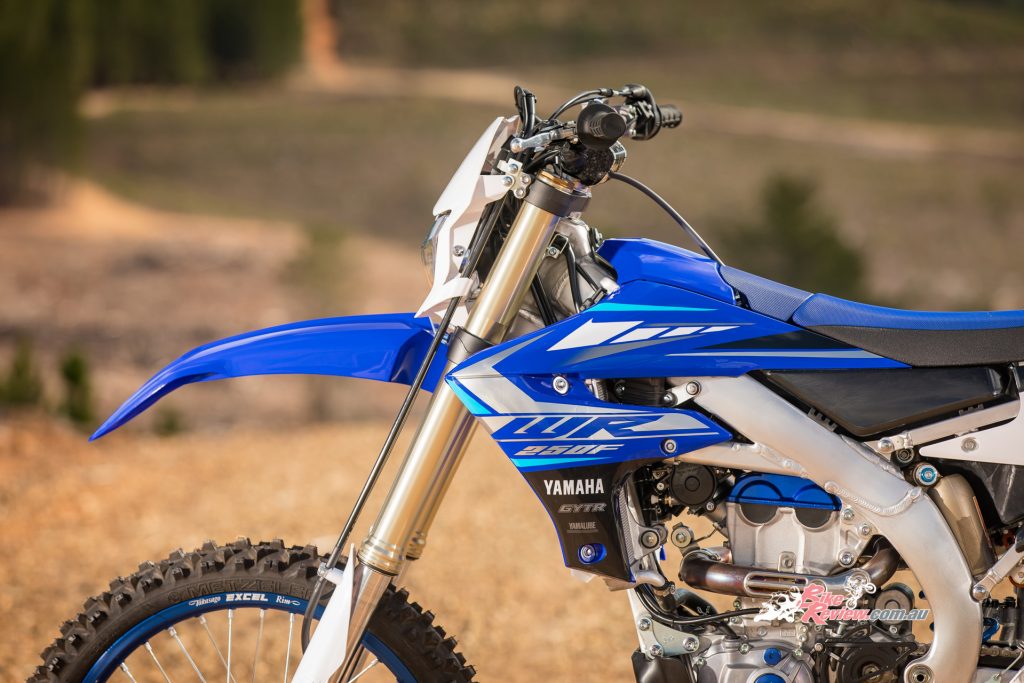
The WR250F runs the same KYB upside-down front forks as the YZ250F but with model-specific enduro settings.
WR250F runs the same KYB air-oil-separate upside-down front forks as the YZ250F but with model-specific enduro settings to provide stable damping force. Yamaha states that this suspension is acknowledged to be the best available on a production dirt bike and responds particularly well during the transition between the compression and rebound strokes. And because the suspension holds up well in the stroke, ground clearance is improved over the outgoing model.
The outer tubes are the same as the YZ250F and contribute to a secure feeling of ground contact. The mid-speed valve (MSV) that provides damping in the mid-speed range has been changed from a coil spring type to a leaf spring type. This mechanism responds to even the slightest amounts of oil flow and so delivers excellent damping feel at low speeds.
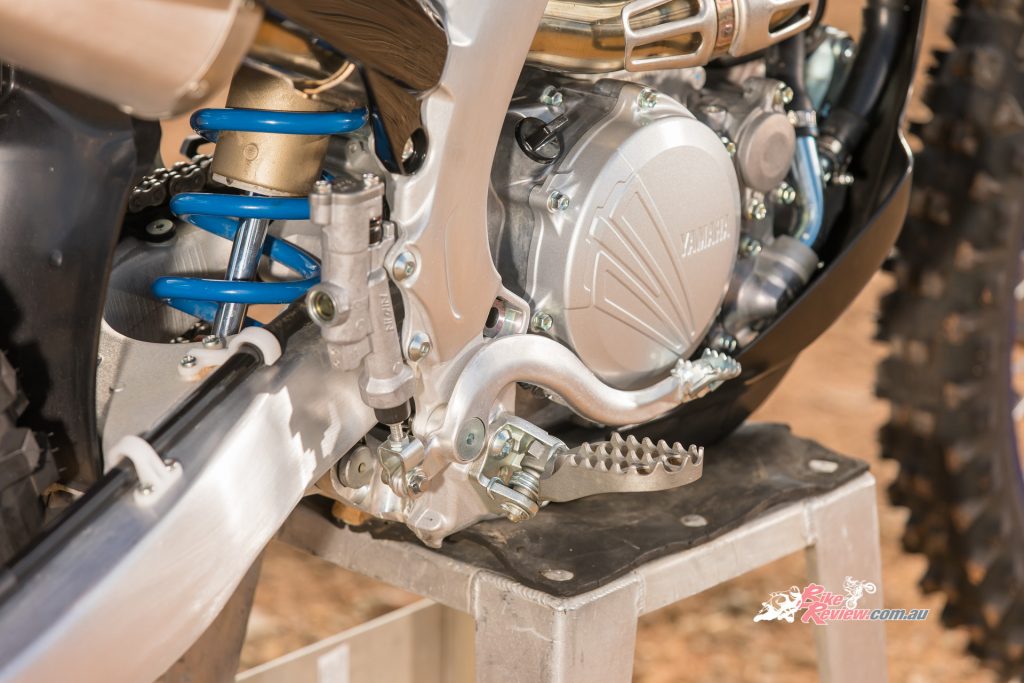
The rear shock absorber is also based on the YZ250F unit and features enduro model-specific settings.
The rear shock absorber is also based on the YZ250F unit and features enduro model-specific settings. It features a coil with a higher fatigue strength than the current model’s and with an 11.5mm wire diameter achieves a weight reduction of approximately 350 grams. The capacity of the reservoir has been increased by 30cc to run cooler and achieve a more stable damping force.
The new WR250F features a more protective plastic resin engine guard to help prevent damage to the frame, engine, water pump and hoses when running through ruts or from impacts by kicked up rocks. Also, reducing the size of the open space at the front limits the amount of mud and stones entering and so reduces additional running weight.
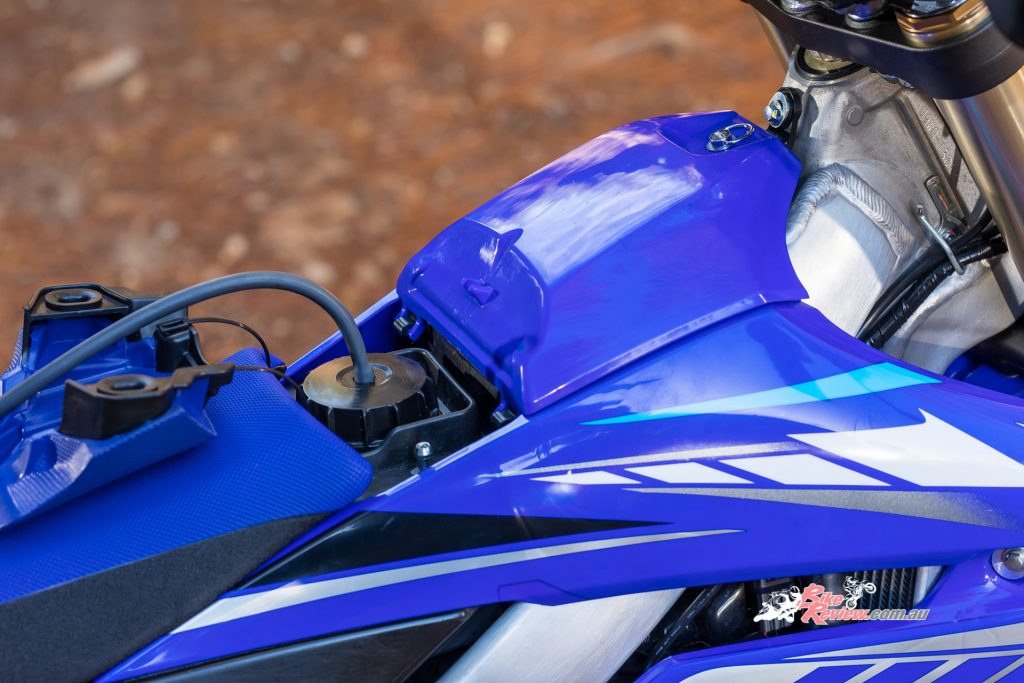
A new 7.9L plastic resin fuel tank is featured that reduces the frequency of refuelling during longer distances.
A newly designed 7.9L plastic resin fuel tank is featured that reduces the frequency of refuelling during longer distances. The current YZ250F’s tank was used as the developmental base, and the lower portion has been extended toward the centre of the bike to improve mass centralisation, and to increase the capacity.
A compact fuel pump is another new feature. These changes have made it possible to achieve a slim, compact body design comparable to the YZ250F that also results in minimum interference with the riding position.
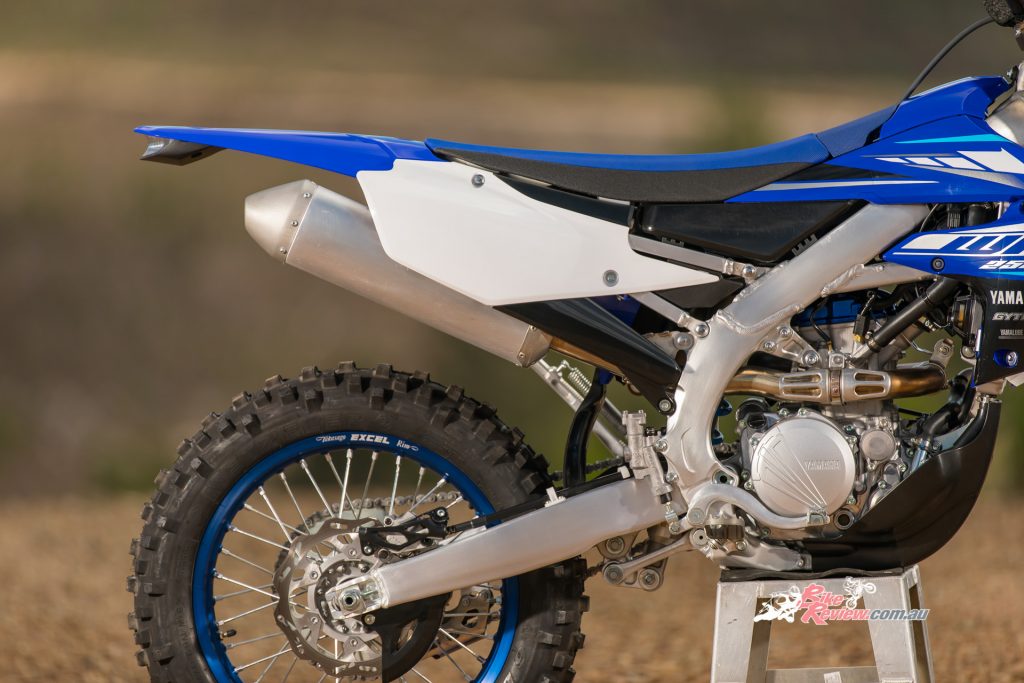
The WR250F has a redesigned seat with stiffer seat foam is fitted to aid rider manoeuvrability.
A redesigned seat with stiffer seat foam is fitted to aid rider manoeuvrability and to make getting on and off the bike easier. A slimmer design through the shroud/knee contact area further improves ergos.
A lighter and less obtrusive forged aluminium side stand is positioned to ensure plenty of ground clearance when riding through ruts and the like. The new stand sits higher and the amount it juts out from the chassis is reduced which helps prevent snagging. The weight of the stand has also been reduced by about 100g. This is the same as the 2019 model YZ250FX stand design.
The WR250F’s new headlight cowl sits lower and closer to the rider. It contributes to centralisation of machine mass and helps to create a light, agile impression for the machine.
A new lightweight front wheel speed sensor connects to a speed display and with no more speedo drive, makes front wheel changes easier. The system features a pulse wheel and sensor system known for excellent reliability and provides the detailed speed information essential for enduro riding. Display includes low fuel warning light.

The 2020 Yamaha WR250F runs with an 18-inch rear wheel, allowing for a wide range of tyre fitment.
The WR250F runs with an 18-inch rear wheel, allowing for a wide range of tyre fitment. Standard high traction Metzeler 6 Days Extreme enduro pattern front and rear tyres are specced, making this new bike ready to race straight from the showroom.
For the Australian market, the new WR250F is supplied fully ADR compliant and in road registerable condition. A free competition kit is supplied and can be easily fitted for closed course use.
The kit includes:
- CCU for smartphone tuning capability
- Lightweight LED tail light/ and licence plate holder
- Braided steel front brake line
- Competition larger diameter exhaust muffler outlet
- Full power / full travel throttle stopper screw kit
- YZ airfilter holder guide
- Wiring connector for headlight
- Brake snake kit
- Wiring connector for rear brake light
- WRF Barkbuster handguard set
2020 Yamaha WR250F Specifications
Price: $14,099 R/A
Claimed Power: N/A
Claimed Torque: N/A
Wet Weight: 115kg
Fuel capacity: 7.9L
Engine: Liquid-cooled, four-stroke, DOHC, four-valve, 77.0 x 53.6mm bore x stroke, 250cc, 13.8:1 compression, TCI ignition, EFI, electric start, wet sump.
Gearbox: Six-speed wide-ratio.
Clutch: Wet multi-plate, cable actuation.
Chassis: Flex tuned aluminium bilateral beam.
Rake: 27°
Trail: 116mm
Suspension: 48mm twin chamber KYB inverted forks, 310mm travel, fully adjustable KYB shock, 317mm travel.
Brakes: 270mm rotor (f), twin-piston sliding caliper and conventional master-cylinder, 245mm rotor (r), single, two-piston caliper
Wheels & Tyres: Spoked, 21×1.60in (f), 18×2.15 (r), 90/90 – 21 (f), 130/90 – 18 (r), Metzler 6 Days Extreme enduro pattern
Dimensions
Wheelbase: 1480mm
Seat height: 955mm
Ground clearance: 320mm
Overall width: 825mm
Overall length: 2175mm
Overall height: 1270mm
Instruments: Lightweight multifunction.
The Verdict | Review: 2020 Yamaha WR250F, enduro beast
Fantastic!
The new WR250F engine is based closely on the fuel-injected YZ250F design (Check our review here), and features a rearward-inclined cylinder and reverse cylinder-head. Here is our 2020 WR250F review.
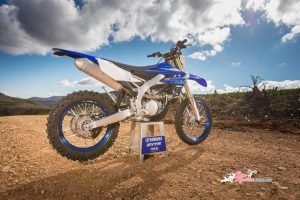
2020 Yamaha WR250F


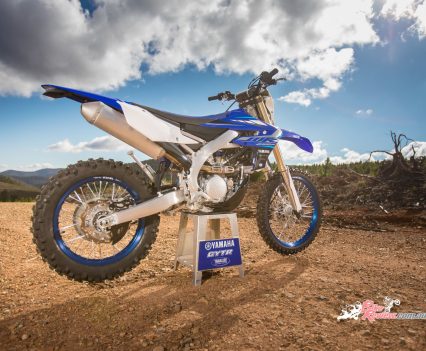



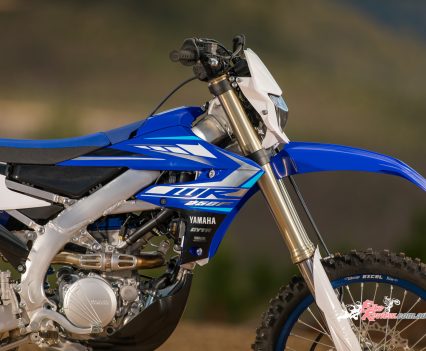
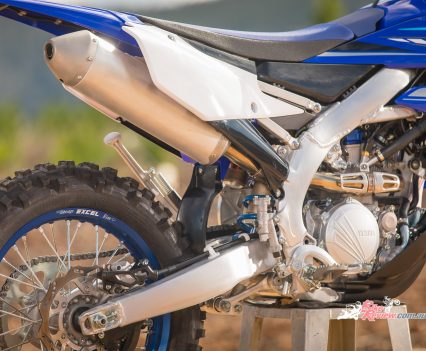
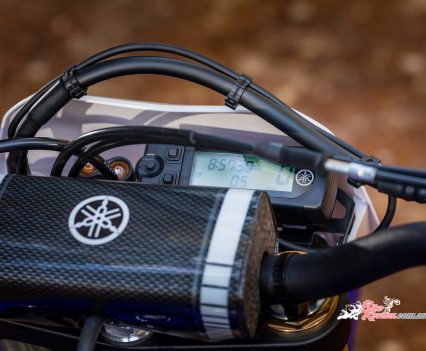
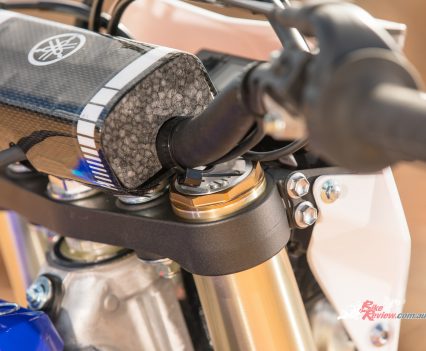

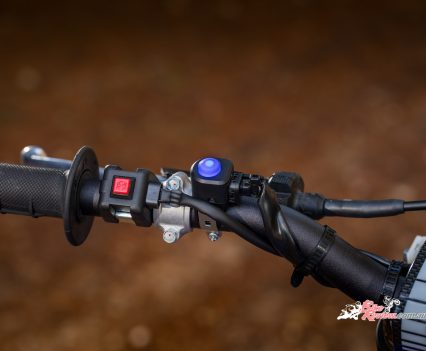
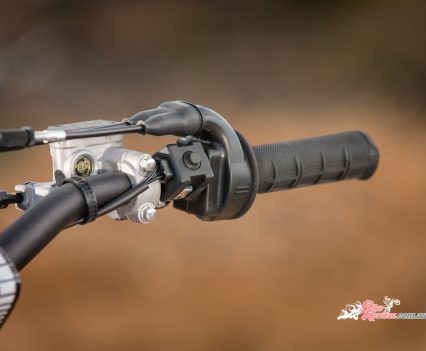


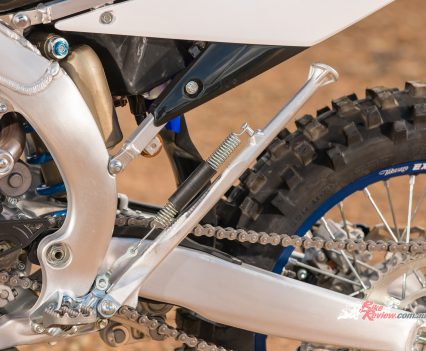

















June 9, 2023
Bought the 2023 model here in the state of Maine USA ,, ive been dialing since march when i picked it up.. No comp kit available with the bike here in the states ,,ya have to buy all the parts individually.. Really wanted the CCU BUT at $651.00 US dollars im skippin it. The seasons just starting here so will fire it up for the first time this weekend. Perhaps with the departure of the WR250r model ,it will be replaced with a WR350R or perhaps a 400r. If this f model was 350cc you would have rated it 9.5 or perhaps 10
June 9, 2023
If this machine was a 350 it would rate 9.5 perhaps 10. Here in the states you have to buy all the comp kit components individually. i did but the CCU is sold seperately for 651. US dollars ,, too much for this guy. Bought the 2023 in march and will fire it up for the first time this weekend, should be the bomb ide think
January 6, 2024
Hi David – sorry about the late reply – how did you go with the set-up in the end? Not sure re the 350cc/9.5 or 10 – would depend on the power delivery, we don’t hand 10s out very often… Jeff.